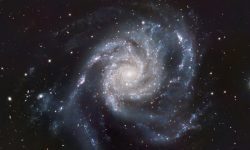Hank’s Astrophotography Blog

I purchased my 8″ Celestron Evolution HD telescope with StarSense in the spring of 2020. About the same time I got interested in using a Revolution Imager video camera to take photos of the moon, planets and deep sky objects. The Revolution Imager was designed to be a night security camera and while the photographs were not very high quality, they sure got me interested in taking photos. By late summer I had a Mallincam DS10c video camera and Starizona Hyperstar that allowed me to take high quality images with a wide field of view. By the fall of 2020 I had an outdoor observatory set up close to our home in Custer, South Dakota, that allowed me to control the telescope and camera from inside our home when the weather turned cold. The telescope and camera are computer driven. I currently use a laptop computer and two monitors to run the telescope and camera. The telescope is aligned for each viewing session using StarSense; a special camera on the telescope that can locate where it is and align it with the stars. The telescope is controlled via WiFi using a combination of CPWI (Celestron’s telescope control software) and Stellarium, a free planetarium software that helps me find what I want to see and it sends the telescope to that location. I use SharpCap software to control the video camera over a USB3 cable. This software can take a series of video images and align them to create one image. …





